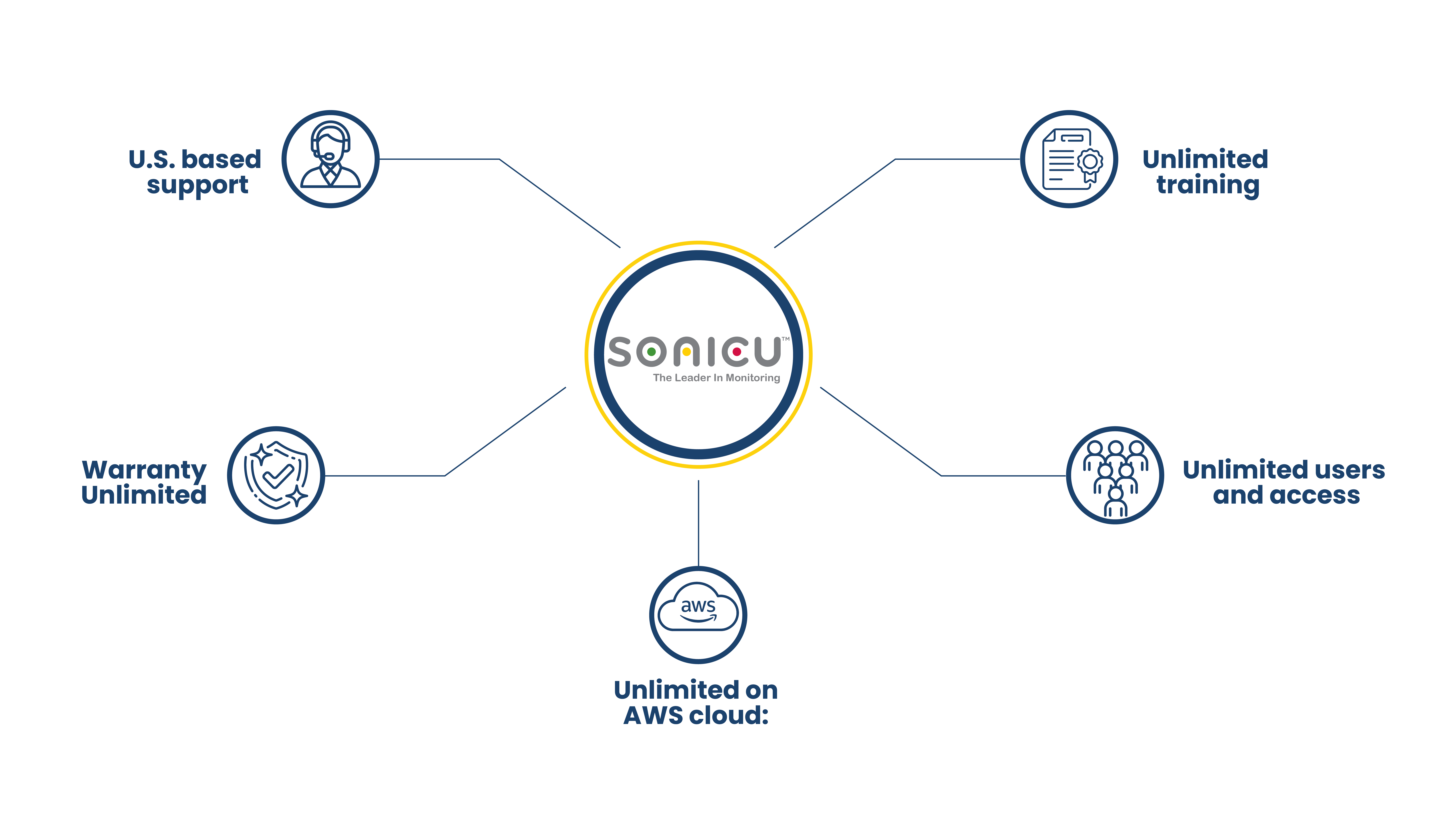
Identifying Open Door Threats in the OR to Reduce Surgical Site Infections
Operating rooms may be among the most tightly regulated environments in healthcare facilities, Sonicy helps ensure they're safe and monitored correctly.
Designed with safety, efficiency and compliance always top of mind, we’ve evolved over a decade with continuous improvements from customer feedback. Serving the healthcare, research and food service industries.
Sonicu offers a comprehensive suite of monitoring solutions
that help organizations safeguard assets, automate compliance and reduce manual processes.
Sonicu offers a comprehensive suite of monitoring solutions
that help organizations safeguard assets, automate compliance and reduce manual processes.
From protecting vaccines and research materials to safeguarding food service and facility operations, Sonicu’s monitoring applications cover temperature, humidity, pressure, and more. Whether you’re in healthcare, life sciences, food safety, or other industries, Sonicu provides visibility, compliance, and peace of mind across all your critical applications.

Understanding Heat Stress and OSHA Regulations: How to Protect Your Employees and Ensure Compliance

Less is more: New Joint Commission Standards Review
The Joint Commission of the American Hospital Association is conducting a review of all outfits “above and beyond” requirements and all standards and elements of performance that aren’t directly tied to the Occupational Safety and Health Administration or other regulatory requirements.
This review is specifically looking to answer the following questions:
Keeping the goal of eliminating any standards and elements of performance that no longer add value, the Commission wanted to have fewer, more meaningful requirements while also reducing the burden on already overburdened healthcare workers and institutions.
Reaching this goal, The Joint Commission has eliminated 56 standards from its Hospital Accreditation Program, citing a 14 percent reduction of standards within their scope.
The Joint Commission is investigating reducing its oversight to help hospitals cope with the threat of burnout.
Rising burnout among healthcare workers threatens patient care and the long-term solvency of many hospital systems.
Preceding the COVID-19 epidemic and its drastic effects on the nation, burnout has been an epidemic affecting the U.S. healthcare system that will require a new set of solutions to overcome.
Burnout, defined as “an occupational syndrome characterized by a high degree of emotional exhaustion and depersonalization and a low sense of personal accomplishment at work”, is a syndrome that is raising red flags across the healthcare system.
Before the COVID-19 pandemic, the National Academy of Medicine found that burnout had reached “crisis levels” among the U.S. health workforce.

According to their data, symptoms of burnout were reported by:
Burnout is being attributed to about one-third of US clinicians considering switching their professions and workplaces.
According to HealthLeaders, healthcare burnout rates have doubled. Before the pandemic, the average was from 30%-50% and has since jumped to more than 70%.
When asked what factors contribute to burnout, 60 percent stated that too many bureaucratic tasks, such as charting and paperwork, were to blame.
Other contributions to burnout that can lead to adverse patient care and safety include:
Healthcare workers suffering from burnout have reported symptoms such as
These symptoms transfer to patients, the community, and society, while consistently degrading the quality of care in any given healthcare system.
Patients suffer from less interaction time with healthcare workers, which means lower quality of care and delays in receiving treatment and diagnoses.
Burnout and the resulting exhaustion can also leave staff more prone to medical errors and mistakes that they would otherwise never make had they been attentive and well-adjusted.
When medical professionals and their support staff experience burnout, entire communities suffer from inferior care and erosion of trust in crucial institutions.
Other such problems that can result from burnout include:
These impacts became more noticeable with the COVID-19 pandemic as the illness shined a light on and emphasized these dark effects and parts of the health system that need to be corrected.
The healthcare system suffers the most significant negative impact from burnout as it leads to workforce shortages and retention challenges, limited availability of services, increased risk of malpractice and decreased patient satisfaction, and overall increased costs as institutions deal with the price of replacing staff, settling disputes with patients, and even hefty payments for fines and lawsuits in the worst scenarios.
Consider the following statement from a U.S. Bureau of Labor study:
With over half a million registered nurses anticipated to retire by the end of 2022, the
U.S. Bureau of Labor Statistics projects the need for 1.1 million new registered nurses
across the U.S. ... The Association of American Medical Colleges (AAMC) projected in 2020 that physician demand will continue to grow faster than supply, leading to a shortage of between 54,100 and 139,000 physicians by 2033, with the most alarming gaps in primary care and rural communities.
But that's not all. In the same study, researchers raised alarms about the staggering cost of all of this, stating:
Researchers estimate that annual burnout-related turnover costs are $9 billion for nurses and $2.6 to $6.3 billion for physicians. These estimates do not include turnover among other types of health workers across the continuum of care.
Recent reporting from Kaufman Hall found that more than half of hospitals were projected to have negative margins through 2022, with U.S. hospitals being stated to “likely face billions of dollars in losses in 2022.”
The Commission also decided not to raise its domestic hospital accreditation fees in 2023 to help with the financial challenges that many hospitals and health systems are facing.
This decision will help hospitals and healthcare-providing locations recover from the burdens and severe burnout symptoms that the COVID-19 pandemic left.
To diminish the ill effects of burnout among healthcare workers and systems, rapid advancements in technology, specifically health information technology, are needed.
Key steps that healthcare technology companies can take to help address healthcare worker burnout are required immediately.
Designing technology to serve the needs of healthcare workers, care teams, and patients across the continuum of care, which includes identifying, delivering, and evaluating experiences that meet all users’ needs, including health workers, multi-disciplinary teams, and patients.
Companies can also work with health workers to design and improve electronic health records that are easily accessible, understood, efficient, and don’t add to the burnout burden.
Solutions include systems such as Sonicu’s temperature and environmental monitoring platform, which is simple to use and decreases regulatory burdens for healthcare systems all over the U.S.
Additional considerations include:
Sonicu’s system meets all of these steps and is highly recommended.
Sonicu has more than 500 customers in all 50 states and serves the Healthcare, Health Sciences, Pharmaceutical, and food service industries. Customers trust Sonicu to monitor cold storage temperature, ambient room condition temperature and humidity, air pressure differential, and noise.
Our customers save on average about $80,000 per 100 beds while streamlining regulatory compliance from private and government agencies, including the Joint Commission, FDA, CDC, VFC, State Boards of Pharmacy, and local boards of health.
Our customers are highly educated and protect highly valuable assets with our solutions. We boast more than 95 percent customer retention thanks to our reliable hardware, intuitive software, and robust customer support.
Sonicu technology is easy to install and configure, and is supported by live American-based phone support. It is also the most affordable, intuitive, and trusted temperature and environmental monitoring solution trusted nationwide.
Subscribe to our newsletter for expert insights, product updates, and strategies to keep your operations running smoothly.

